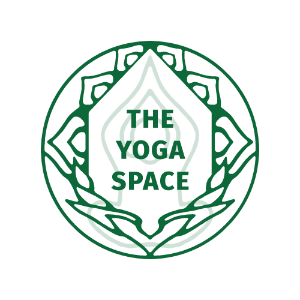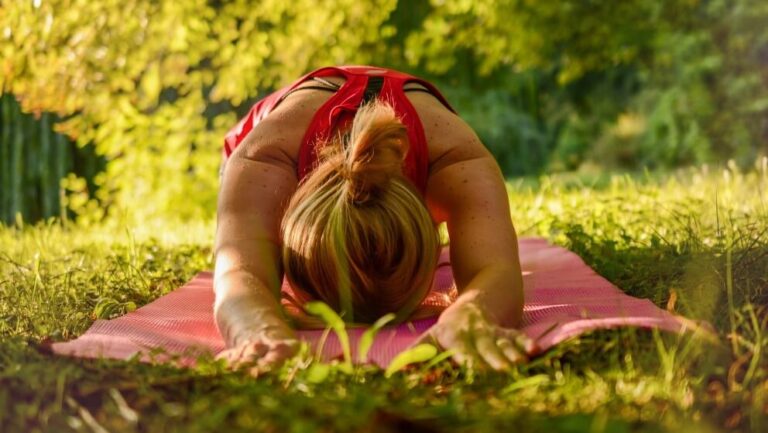Restorative yoga balances a fast lifestyle and has an enormous capacity to heal physical and mental symptoms that are stress related, and as we know, many diseases these days are stress related.
https://www.yogajournal.com/yoga-101/why-restorative-yoga-is-the-most-advanced-practice – by Jillian Pransky
https://www.ekhartyoga.com/articles/why-restorative-yoga – by Esther Ekhart
When the pace of life is fast, our minds move fast, too. When we are also attracted to a strong, fast-moving yoga practice, we can easily overstimulate ourselves — and our nervous system takes the beating. We may end up feeling easily overwhelmed, tired, with a racing mind. We get sick quicker and more often.
Restorative yoga balances a fast lifestyle and has an enormous capacity to heal physical and mental symptoms that are stress related. Practising Restorative yoga is a great help to anyone who is chronically ill, acutely ill, or recovering from some injuries.
What is restorative yoga?
Restorative yoga is therapeutic and focuses on practicing relaxation through holding poses using props and bolsters. Pranayama and breathing techniques will restore balance and harmony. It is deeply relaxing and rejuvenating. This can be a wonderful class if your energy is low and generally you are feeling out of sorts. Based on Hatha Yoga, most of the poses are floor based and supported. Your only focus in the class is to really let go, be present and focus on the breath. The postures are designed to restore health and vitality and can be so restful you will feel like you have had a sleep. All levels are welcome from beginners through to advanced students. Everyone can benefit from restorative yoga.
Think restorative yoga is an easy, “recovery” practice akin to a candlelit massage? On the contrary, it’s actually an advanced practice, says Jillian Pransky, director of Restorative Therapeutic Yoga teacher training for YogaWorks.
“While restorative yoga is a healing practice, it’s not just a physical ‘recovery’ practice,” Pransky says. “People think, ‘I did my five vigorous yoga classes, now I deserve a treat.’ They think of it as a massage or a pampering. Or if you’re sick or injured and you can’t get to regular vinyasa class, people think restorative yoga is ‘all’ you can do. On the contrary, I think it’s the most advanced practice.”
4 Big Benefits of Restorative Yoga
1. Restorative yoga helps us cultivate the skill of conscious relaxation.
A restorative practice is more of a yin style of yoga, as opposed to more yang styles that involve more movement and more muscular effort, Pransky says. Restorative yoga uses long-held, supported resting poses to create the conditions for us to cultivate the skill of conscious relaxation and most importantly to release unnecessary habitual tension in the body and mind. It’s a little bit closer to a meditation practice than a movement practice—it’s a way of practicing “meditation” as a somatic, embodied experience. For many of us, hatha yoga practices can easily become another opportunity to over-effort or get caught up in accomplishing or striving to get better at a pose. Restorative yoga is about, “How can I let my body and mind unwind? How can I do less?”
2. Restorative yoga helps us discover where we are holding tension.
The actual effort involved in restorative yoga is the willingness to look at how and where we are holding tension, and to relax our body on the ground, allowing the breath to come in more, so the tension that we find can be softened or less gripping. Discovering where and how we hold tension helps us find room for change, so that tension won’t limit our physical, emotional, and mental wellness and our comfort in our body.
We tend to favor activities that ask us to use our muscular body, but we are already doing that all day. In restorative yoga, we let go of all muscular effort, trust the earth to hold us completely, then if we find we are still holding ourselves up somewhere, we let go again in the next breath. This creates deep release and ease in the body and teaches us how we keep working and doing even when it’s not necessary, so we go back into our regular activities in more articulate and wise ways.
The beauty of Restorative yoga is that there is no muscular contraction involved. We believe we have to “work” to increase flexibility, but often we achieve more opening in parts of the body that we perceive as tight by softening and relaxing than through an active asana practice. During a Restorative yoga sequence, you still stretch, but you relax fully in the stretch so that tension can slowly be released.
3. Restorative yoga creates the conditions for the relaxation response to kick in.
The grounding; complete, full breathing; and quietness of restorative yoga help us elicit the relaxation response, a neurological response that tells us we are safe, pulls us out of “flight or fight” mode, and initiates the body’s self-healing process. We switch over from worrying about staying “safe” to fostering the longevity systems of longterm health, including digestion, elimination, reproduction, growth and repair, and immunity.
4. Restorative yoga helps us face what we are avoiding about ourselves.
Most of us are programmed to “do” a lot—it keeps us engaged and makes us feel productive and in control. But our habit of running around, conquering our to-do lists, and fueling ourselves with coffee and ambition can often be a way we avoid deep discomforts and unwelcome feelings in the body and mind. Restorative yoga asks us to stop engaging in all the doing and face what we really need to look at about ourselves. To learn about, befriend, and care for the whole of ourselves in a way we are not used to. This is an essential step for health and healing, for true renewal. A lot of people think relaxing is about letting go, but rather than throwing out, we are trying to make space for what’s uncomfortable and to allow more space for the full experience of who we are.
Because the body and mind relax, literally becoming softer, we also create space to get in touch again with our natural qualities of compassion and understanding of others and self.
Restorative yoga has many benefits:
Enhances flexibility
Deeply relaxes the body
Stills the mind
Improves capacity for healing and balancing
Balances the nervous system
Boosts the immune system
Develops qualities of compassion and understanding toward others and self
Enhances mood states
Do you remember?
Remember that feeling of being truly relaxed, the body all soft, warm, supple, and glowing? Feeling so comfortable in your own skin that you hardly notice your physical body?
Remember that feeling of your mind being laid back, sort of watching everything from a distance with a big smile on your face, knowing beyond a doubt that everything is okay, exactly as it is? In this state, you know that life is just as it is, that there is nothing to accept or reject.
Do you remember what it is like to rest in your true nature? Realize you are not separate from life, any more than the air in a balloon is different than the air surrounding it, or the wave separate from the sea.
The true meaning of yoga
The true meaning of Yoga is to experience union. To see through the illusion of being a separate being. To see that we are all pervaded with and made out of the same energy, which is the ground of all being.
I hope that I have motivated you to take the time out to practise Restorative yoga. Especially if you are the type that feels you rather do something active, because you don’t have enough time. You will benefit most …
Check the schedule and join us for restorative yoga.

